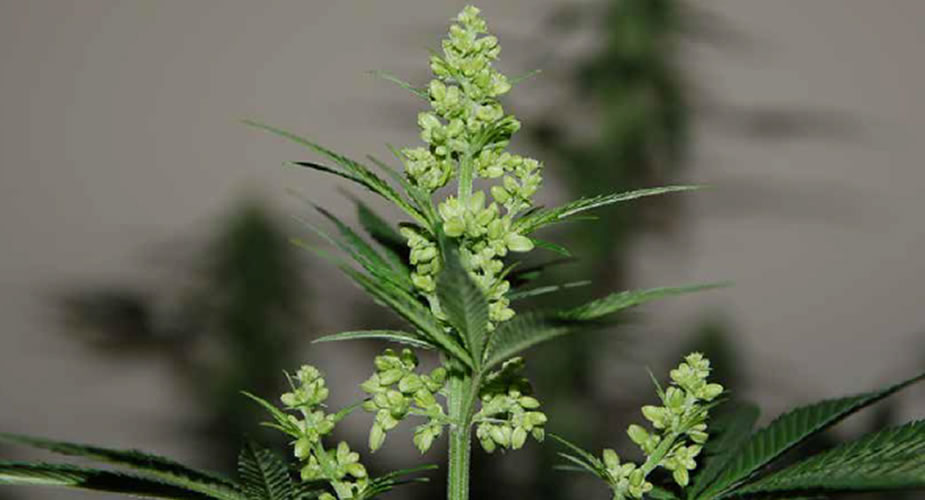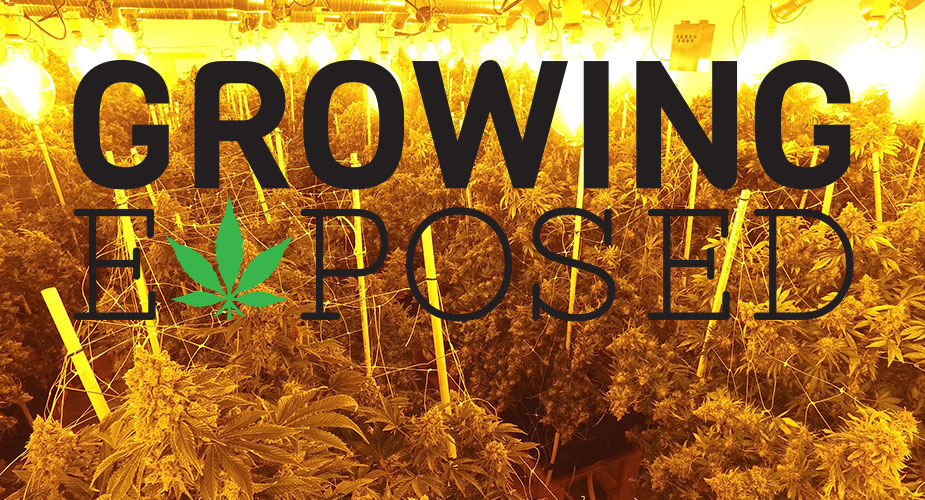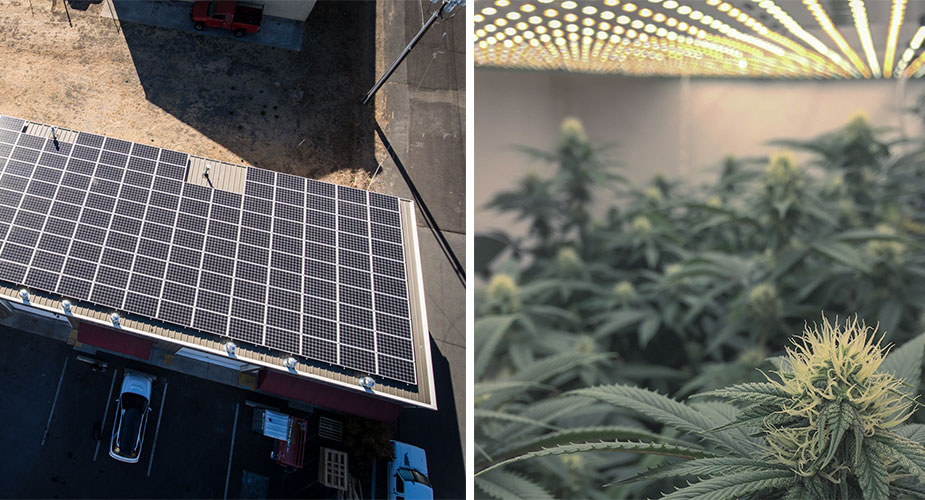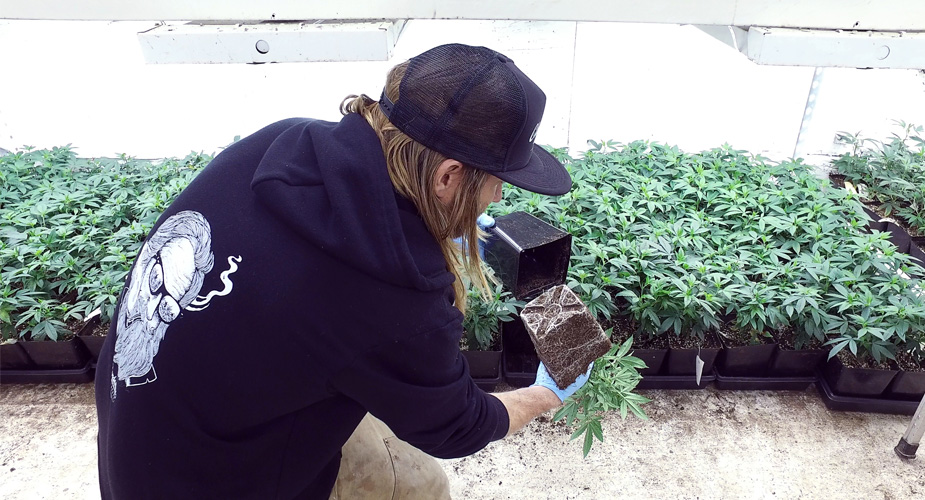Cannabis is a dioecious plant, which means that the male and female flowers develop on separate plants, although monoecious examples with both sexes on one plant are found. Sibling crosses draw genetic traits from both the mother and father plant. The male plays just as important a role as the female does, but it’s rare to see male cannabis plants in full bloom, and pollen collection and use is almost a mythical craft. I will do my best in this article to shed some light on the ways pollen is collected and dispersed.
Before we talk about collecting pollen let’s talk about staggering. This is a trick I learned by trial and error that allows us to get the maximum number of seeds per plant. (This doesn’t apply to those just working with a branch or two.)
When pollinating a mother plant for seed, I will start her into 12/12 a full 7 days before I move the male into budding the room. Keep in mind that each strain is going to be a bit different on a time frame, but this 7-day rule has worked very well for us. Once the male is flowering well, the females will be entering a window around days 21-24. Most Hybrids I work with are done in less than 9 weeks, so 3 weeks in is a good place to start. You can pollinate up to day 30, but you stand a good chance of the seeds never getting mature so I find each strain perfect window. Apollo-13 is closer to 21 days and Jacks Cleaner is better at say 26 or so.
One thing I must insert, and I am not trying to be rude to you young inspiring breeders out there, concentrate on producing the best herb you can and mastering the craft of room set-up. Again, no offence but you can’t breed properly in a cab. I do it in a limited space, granted, but I have been growing successfully for some 32 years and didn’t start breeding until I had around 20 years under my belt. It doesn’t hurt to experiment; that is how we learn but I think at least a few years as a grower are in order before anyone attempts breeding, even though I lay out every single step. If you think it’s easy ask a grower how many complete garbage strains he’s grown out from so-called “Established Breeders.” It takes an eye and that is gained from experience.
So now we have our male in full bloom and we have our females in the breeding room. This area should be completely separated from the main bud area, preferably in a completely separate building. If the two rooms share a common HVAC duct system you will get pollution into your main area. Pollen is serious stuff, it flies everywhere and you cannot see it. It will stick to your clothes, pets, etc. You must change clothes and bathe after entering your breeding area.
Over the years, I have budded out quite a few males and each one acts a bit differently. Some bud extremely fast, while others tend to release pollen over a longer period of time. The best males to work with, are ones that are maturing and releasing pollen in a short time p. I prefer to simply allow my males to hang out with my mothers for a few days with a small fan positioned on the male with females in the air stream. As the stamen opens the pollen naturally flies into the air providing max coverage. We also like to pluck off ripe pods and gently roll them between our fingers over each cola head. This is how we captured the amazing suspended pollen shots I set as a standard and later Jill perfected.
THE POLLEN TRAP
One trick I have used in the past is the pollen trap. This trick takes a good eye for when the male is about to open. If you can figure that out then it’s simple: take two large Tupperware containers and form a box that will hold a cup with water. Wax paper in the bottom and along the sides and tops you have cut off the mature male. Place the tops to hang over the wax paper and tape the entire box shut, this allows you to have it in a non-secure place like a vegetative room. Warning: Don’t spill the water, it ruins the pollen. Don’t put more into the glass than you need to. I used a heavy bar glass that wouldn’t tip over.
One thing we should cover is male cluster formation. When selecting a male for breeding, we run him as a mature full-size plant and we want to see if he has met all our other breeding criteria that he makes big gnarly male clusters. This indicates the bud formation he might pass on. If your male produces small clusters he most likely will not pass on larger yields to the offspring. This is not set in stone but it is a very good indication. Once the plants are fully pollinated, I wash the females off with a spray bottle of water and if it’s raining, I place them outdoors for a night up high on a barrel where no bugs could get to her. I prefer a gentle long rain to a spray bottle as it removes any excess pollen. Once I have redundantly rinsed, I place the mothers back into my main bud but not in the main air stream of my blowers.
MORE TRICKS
Back to the male we have used for the breeding party. I will bend his branches over and cover them with a V-spaded hanging trap I make from wax paper. This is the process I will get Jill to shoot here in about 3 weeks and add to the thread. One thing to watch out for is the male flowers, they contain water and must be removed from pollen. I find the hanging traps I make can be shaken and the flowers being heavy fall to the corners and can be removed from the pile.
Collecting pollen is a bit like milking a gnat. When you manually roll a pod and it falls, it may be a million grains but it’s barely visible, for it tends to stick to the wax paper, but the solution is to mix in some dry flour. I used a ratio of about 5-to-1 and ended up with a yellow-looking mix that resembled cake batter. I allowed the flour to dry well. Microwaving wouldn’t be a bad idea to remove any moisture that might remain in the flour.
The male cannabis plant is amazing in its own right and in the game of creating hybrids, a male known for his attributes can be worth a lot more than the most elite female cutting.





